The Bossa Nova Movement
Tomomi TAMURA
April 12, 1999
Bossa nova, meaning
"new wave" was a new way of playing samba.
Guilherme Vergueiro, a contemporary Brazilian composer, claims that bossa nova is not a type of rhythm
by it self. Its rhythm
is drawn from indigenous samba,
but jazz musicians in the United
States also affected
the style. Interestingly, socio-economic analysis of the country
of Brazil at the time relates to the rise of this new type of music.
In the late fifties carnival
type of sambas
with percussive accompaniments were popular among
the working class. The middle class
enjoyed ballads called samba-cancao that often involves
melodramatic texts and emphasis on vocal performance. We might argue
that Jazz acquired
more listeners among
the middle class
by doing away with direct
expression of miseries
and sorrows of the working
class, which often
belong to blues.
In a similar way bossa
nova captured the middle and upper class
citizens by polishing the native music
with new ideas
drawn from Jazz.
Like jazz, bossa nova emphasized the role of instruments and de-emphasized the role of vocalists to the extent
that they are no longer
the center of attention. "Lyricists avoided the melodrama and tragic outlook
characteristic of the samba-cancao (1 Perrone).
Characteristics of bossa nova thus include:
--reserved soft vocal
that allows more space for instrumental performances
--a colloquial tone in texts
that corresponds to the speech-like mode of singing
--dynamic integration of melody, harmony,
and rhythm
--standard drum set instead of traditional binary
samba beat
--acoustic guitar pluck
chords to syncopate drums and bass
--frequent use of the altered
chords associated with jazz, including flat seventh and sharp ninth
--instrumental
improvisation
The bossa nova began to spread overseas
in the beginning of the sixties. Some critics argue
that the movement
actually began in the United
States, pointing that in 1953 Brazilian guitarist Laurindo Almeida recorded
with West Coast
Jazz saxophonist Bud Shank. Nonetheless, they are far from the origin of the new wave because
those two musicians did not use percussions in their recordings. Therefore it is difficult to consider that they have served as models for alterations of syncopation characteristic of bossa nova.
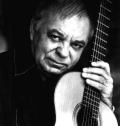

Antonio Carlos Jobim
and Joao Gilberto
are the two Brazilian musicians who have made foundation for the bosa nova movement. Jobim, born on 25 January
1927, began playing
the piano at the age of fourteen. Native of Rio de Janeiro,
he became known
as a composer and arranger
by the time he was 27. The scores for the play Black Orpheus
brought him international acclaim, when the motion picture
based on the play won 1959 Academy
Award in the United States.
Many of his composition became
jazz standard numbers,
twelve of which
now listed in the "real book." Just to name a few, Girifrom
Ipanema, Desafinado, How Insensitive, Corcovado, have become repertoire among many jazz musicians.
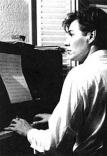

Joao Gilberto was a guitarist who manifested Jobim's
composition. Gilberto developed his own style
of guitar playing,
which is "far from the classically based style of Almeida.h
(Perrone) His first album "Chega de Saudage" that he recorded with Jobim can be (R~rronE~) rightfully claimed to have started
the history of bossa nova,
influencing many American
jazz musicians.
One could not talk about
bossa nova without
mentioning interaction between
Brazilian musicians and jazz musicians in the United
States. That so many traits
of bossa nova resembled jazz seems spontaneous considering the fact that a shortage of native music
due to the military regime
that took place
in Brazil at the time.
Many talented musicians fled to the Untied States
and other countries. Music that was imported from the United
States thus seems
to have had a great
influence on the development of bossa nova.
Among them was West Coast cool-jazz. It is presumable that the Gerry
Mulligan quartet, a piano-less quartet
that highlighted the West Coast
jazz scene, affected
emerging musicians in Brazil. In fact, Joao Gilberto said that his vocal style
was influenced by the baritone
saxphonist Mulligan. It is also reported that Chet Baker,
the singer/trumpeter in the Gerry
Mulligan quartet affected
Jobim's vocal style.
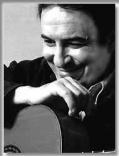
Whether true or not, there
is a certain similarity between
"coolness" of West Coast musicians and bossa nova musicians like Joao Gilberto
and his wife Astrud Gilberto. Astrud had not been a professional singer
until her first
recording for "Getz/Gilberto," the historical album
recorded in March
1963. Nonetheless her vocal style,
along with her husband's, has set out a typical
example for emerging
bossa nova singers.
Because she was not too skillful a singer, her vocal seems
to give more feeling of intimacy, not exaggerating emotions
at the same time.
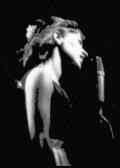

Whenever foreign music
is introduced to overseas, there
must be audiences or musicians who understand the significance of the music.
The bossa nova movement, when it arrived
in the United States, found
many aspiring jazz musicians who took great
interest in the Latin American
music. In fact there had already been a fine base for acceptance, thanks
to jazz musicians who traveled to Brazil in July 1961 for the American jazz festival held in Sam Paulo. These
musicians include Zoot Sims, Tommy
Flanagan, Kenny Durham,
and Herbie Mann.
There they absorbed
Brazilian music and returning
some recorded on melodies they have heard in Brazil.
Between August and September in the same year, a trombonist, Curtis
Fuller, released album
titled "South American
Cooking" from Epic record. The following year in Brazil,
Harbie Mann recorded
"Do the Bossa
Nova" with Bud Powell and Carlos Jobim.
With the help of these
musicians who experienced the new wave on the first hand,
the movement spread
and led to more recordings:
1.62 "Bossa Nova U.S.A." /Dave
Brubeck Quartet (Columbia, NYC) 
2.62 "Jazz Samba" / Charlie Byrd / Stan Getz (Verve,
NYC) 
7.62 "Quiet Nights" / Miles Davis
with Gil Evans
Orchestra (Columbia. NYC) 
9.62 "Big Band Bossa Nova" / Quincy Johnfs Big Band (Mercury, NYC) 
9.62 "Desafinado" / Coleman Hawkins
(Impulse, NJ) 
1.63 "Page One"! Joe Henderson (Blue
Note, NYC) 
3.63 "For Someone
in Love" / Milt Jackson
(Riverside, NYC) 
--includes a piece
titled Bossa Bag
And finally, in March 1963 Stan Getz released an album with Joao Gilberto, which established that bossa nova as one definite genre
that Jazz musicians explore. Following year,
alto saxophonist Paul Desmond released
"Bossa Antigua" from RCA. Oscar
Peterson also played
Corcovado in his album "We
Get Requests" released
from Verve in October 1964.
Kenny Burrell's "Guitar Forms," released two months later,
includes a bossa
nova number called
Moon and Sand.
It may be worth pointing
out that, although
West Coast musicians had influenced Brazilian musicians in the making of bossa nova,
East Coast musicians seem to have taken more interest in the final
product from Brazil.
Stan Getz, born on February
2, 1927, has already established himself as a major tenor
saxophonist when the bossa nova arrived in the United
States. An aspiring
and talented musician, he started touring
with the trombonist Jack Teagarden's band at the age of sixteen. Born in a poor family
in New York, music was his means
to "get off the streets." He progressed through
the bands of Stan Kenton,
Jimmy Dorsey, and Benny Goodman
until he finally
joined Woody Herman
Orchestra in 1947.
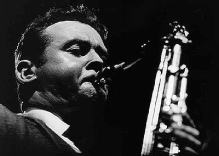
Many critics say Getz's tone is unique,
lighter and more delicate that the conventional sound of the tenor saxophone. his style is wide-ranged and varies dramatically according to his moods. Counter-argument to this is that though
he has an excellent technique (he lacks the emotional power that is often characteristic of his contemporaries. Art Pepper wrote
"Stan Getz is a great
technician, but he plays cold to me." Evaluation of Getz's
playing thus varies,
but it is interesting that the sound
he makes matches
with bossa nova so naturally.
It was not a coincidence that Getz recorded
bossa nova when it was becoming wide spread in the United
States. Earlier in 1958, he had been exposed to Latin American
rhythm when recording his album "Cal Tjader-Stan Getz Sextet." (Fantasy, recorded in San Francisco) Together with vibraphonist Cal Tjader they played Ginza
Samba which their
pianist Vince Guaraldi
had composed. A few years
later, on meeting
Charlie Byrd, Getz recorded "Jazz Samba."
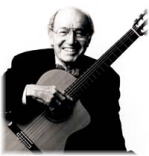
His next album
"Getz/Gilbert" remained in the U.S. pop charts
for about a year and contributed greatly
to capturing mass audience. The bossa nova was now achieving the mass popularity usually associated with pop music,
which was unusual
for music in the jazz category and of foreign
origin. Musicians and producers who did not quite understand what bossa nova was took advantage of this fad, labeling any music that had any Latin American
feel to it as bossa
nova. For example,
Vocalist Edie Gorme
recorded the pop tune Blame
ft on the Bossa Nova.
Tippy and the Clovers sang Bossa Nova Baby.
Stan Getz on the other
hand did not exploit the authenticity of bossa nova music. He rarely altered
either the instrumentation of his working
quartet, other than to add a vocalist. On recordings he frequently included
performers with firsthand knowledge of the material. Luiz Bonfa was one of them, a guitarist who had played
for the soundtrack for Black Orpheus.
Getz did the bulk of his bossa
nova recordings during
February and March
of 1963. He was the one who coaxed Astrud
into performing soft sang-froid vocal
and had started
her career as a singer.
Most of all, Getz's success
may be attributed to the fortuitous combination of Latin American
rhythm with Getz'
s lyricism. His "style was based on rhythmic subtlety
and demanded a constant pulse
from the rhythm
section" (Kirkpatrick 2). Bossa nova thus provided
the type of rhythm Getz needed. The perfection of his skill
enabled him to manipulate the depth of his emotion
he put in his playing.
His reserved, cool sound made an indispensable match with light,
casual atmosphere created
by bossa nova music. Until
today "Jazz Samba" and "Getz/Gilberto" have remained masterpieces that our generation always come back to, and these musicians will continue to inspire future
generation as an origin of successful jazz - bossa
nova relationship.
Sources from On-Line
1 Kirkpatrick, Ron. Stan
Getz, appreciation of his recorded
work
http://www.kirkpatrick77.freeserve.co.uk
2 Yahoo
http://musicfinder.yahoo.com
3
Perrone, Charles A. "Bossa Nova Home and Abroad"
http://caravanmusic.com/Articles/BossaHomeAbroad.htm
Antonio Carlos Jobim
![]() composer / pianist
composer / pianist
![]() born: January 25 1927, Rio de
Janeiro, Brazil
born: January 25 1927, Rio de
Janeiro, Brazil
![]() deceased: December 8, 1994
deceased: December 8, 1994
![]() contributed the scores for the
soundtrack for the film Black Orpheus which won 1959 U.S. Academy Award
contributed the scores for the
soundtrack for the film Black Orpheus which won 1959 U.S. Academy Award
![]() recorded gChega de Saudadeh (No More
Blues) with Joao Gilberto
recorded gChega de Saudadeh (No More
Blues) with Joao Gilberto
![]() 12 pieces of his composition are
listed in the gReal Bookh including Desafinado, Girl from Ipanema, Wave, How
insensitive and Corcovado
12 pieces of his composition are
listed in the gReal Bookh including Desafinado, Girl from Ipanema, Wave, How
insensitive and Corcovado
![]() recorded with Stan Getz, Dizzy
Gillespie, Frank Sinatra and Leeretnour
recorded with Stan Getz, Dizzy
Gillespie, Frank Sinatra and Leeretnour
Joao Gilberto
![]() Guitarist / vocalist
Guitarist / vocalist
![]() Recorded gDisafinadoh in 1959
Recorded gDisafinadoh in 1959
![]() gChega de Saudadeh with Jobim was the title
track of his histric first album
gChega de Saudadeh with Jobim was the title
track of his histric first album
![]() gGetz / Gilbeltoh released in 1964 proved more
popular than gJazz Sambah
gGetz / Gilbeltoh released in 1964 proved more
popular than gJazz Sambah
Astrud Gilberto
![]() Vocalist
Vocalist
![]() Born in 1940 Sarbador, Brazil between a German
father who tought English and a Brazilian mother
Born in 1940 Sarbador, Brazil between a German
father who tought English and a Brazilian mother
![]() Married Joa Gilberto in 1960
Married Joa Gilberto in 1960
![]() Had never been a professional singer until she
joined a recording session in March 1963 for her husbandfs akbum gGetz /
Gilbertoh
Had never been a professional singer until she
joined a recording session in March 1963 for her husbandfs akbum gGetz /
Gilbertoh
![]() Toured with Getz in 1964
Toured with Getz in 1964
![]() Remarried in 1967 and has tow children
Remarried in 1967 and has tow children
Charlie Byrd
![]() Born: September 16, 1925 Chuckatuck, VA
Born: September 16, 1925 Chuckatuck, VA
![]() Picked up the guiter as a small child
Picked up the guiter as a small child
![]() Become a full-time musician after the war
Become a full-time musician after the war
![]() Studied classical guiter
Studied classical guiter
![]() Played in woody Herman Orchestra in the late
50s
Played in woody Herman Orchestra in the late
50s
![]() Made a Good Will Tour Brazil in 1961 under
John F. Kennedyfs Good Neighbor program and developed interest in Latin
American music issued gJazz Sambah with Stan Getz in the spring of 1962
Made a Good Will Tour Brazil in 1961 under
John F. Kennedyfs Good Neighbor program and developed interest in Latin
American music issued gJazz Sambah with Stan Getz in the spring of 1962
Stan Getz
![]() Tenor saxophonist
Tenor saxophonist
![]() Born in Febreary 2, 1927
Born in Febreary 2, 1927
![]() Died of cancer June 6,1991
Died of cancer June 6,1991
![]() His grandfather came from Kiev, Russia and he
changed family name from Gayetski to Getz
His grandfather came from Kiev, Russia and he
changed family name from Gayetski to Getz
![]() Lived un New York
Lived un New York
![]() Joined one of the major bands at the age of
19
Joined one of the major bands at the age of
19
![]() Progressed through the bands of Stan Kenton,
Jimmy Dorsey and Benny Goodman
Progressed through the bands of Stan Kenton,
Jimmy Dorsey and Benny Goodman
![]() Joined Woody Herman Orchestra in 1947
Joined Woody Herman Orchestra in 1947
![]() Did the bulk of bossa nova recordings between
1962 and 1963
Did the bulk of bossa nova recordings between
1962 and 1963
